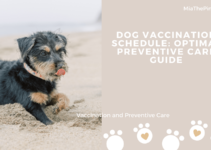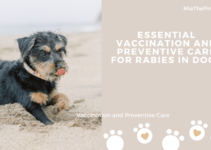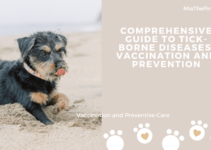Introduction to Canine Distemper
Canine distemper, a highly contagious viral disease that affects dogs, is a serious concern for pet owners and veterinarians alike. This infectious disease poses a significant threat to the health and well-being of our furry friends, making it essential to understand its symptoms, prevention, and the importance of vaccination.
Common Symptoms of Canine Distemper
Identifying the symptoms of canine distemper is crucial for early detection and treatment. Dogs infected with distemper often exhibit a range of signs, including fever, nasal discharge, coughing, lethargy, loss of appetite, and vomiting. Additionally, more severe cases may involve neurological symptoms such as seizures, muscle twitches, and even paralysis. Recognizing these symptoms promptly can help prevent the disease from progressing and causing further complications.
Understanding the Transmission and Prevention of Canine Distemper
Canine distemper is primarily transmitted through direct contact with infected animals or their bodily fluids. It can also spread through the air, making it highly contagious in areas with a high dog population. Prevention plays a vital role in controlling the spread of this disease. Proper hygiene, such as regular handwashing and disinfecting surfaces, can help reduce the risk of transmission. Additionally, isolating infected dogs and avoiding contact with stray or unvaccinated animals are essential preventive measures.
Importance of Vaccination in Dogs against Canine Distemper
Vaccination is the most effective way to protect dogs from canine distemper. Puppies should receive their first vaccination against distemper at around 6-8 weeks of age, followed by regular booster shots to maintain immunity. Vaccines stimulate the dog’s immune system to produce antibodies that fight against the virus, providing long-term protection. It is crucial to consult with a veterinarian to ensure your dog’s vaccination schedule is up-to-date.
How to Properly Vaccinate and Maintain Preventive Care for Dogs
Vaccinating dogs against canine distemper involves a proper protocol to ensure maximum effectiveness. Veterinarians administer vaccines through injections, which may require multiple doses depending on the dog’s age and vaccination history. It is important to follow the recommended vaccination schedule and maintain regular check-ups with your veterinarian to monitor your dog’s overall health and immunity. Additionally, providing a balanced diet, regular exercise, and a stress-free environment can contribute to a stronger immune system, further protecting your furry companion.
Additional Measures to Protect Dogs from Canine Distemper
While vaccination is crucial, there are additional measures you can take to protect your dog from canine distemper. Avoiding contact with unknown or unvaccinated dogs, especially in areas with reported distemper cases, is essential. Additionally, practicing good hygiene by cleaning your dog’s belongings, such as toys and bedding, regularly can help prevent the spread of the virus. Lastly, if you suspect your dog may be infected or showing symptoms, seek veterinary care immediately to prevent the disease from worsening and potentially spreading to other animals.
By understanding the symptoms, transmission, prevention, and the importance of vaccination, we can work together to combat canine distemper effectively. Taking proactive measures and staying informed are key to ensuring the health and well-being of our beloved canine companions.
FAQs
What are the common symptoms of canine distemper?
The common symptoms of canine distemper include fever, nasal discharge, coughing, lethargy, loss of appetite, vomiting, and in severe cases, neurological symptoms such as seizures, muscle twitches, and paralysis.
How is canine distemper transmitted and how can it be prevented?
Canine distemper is primarily transmitted through direct contact with infected animals or their bodily fluids. It can also spread through the air, making it highly contagious. To prevent transmission, it is important to practice proper hygiene, such as regular handwashing and disinfecting surfaces. Isolating infected dogs and avoiding contact with stray or unvaccinated animals are also essential preventive measures.
Why is vaccination important in protecting dogs against canine distemper?
Vaccination is the most effective way to protect dogs from canine distemper. Vaccines stimulate the dog’s immune system to produce antibodies that fight against the virus, providing long-term protection. Puppies should receive their first vaccination at around 6-8 weeks of age, followed by regular booster shots to maintain immunity.
How should dogs be properly vaccinated and maintained for preventive care?
Vaccinating dogs against canine distemper involves following a proper protocol to ensure maximum effectiveness. Veterinarians administer vaccines through injections, which may require multiple doses depending on the dog’s age and vaccination history. It is important to follow the recommended vaccination schedule and maintain regular check-ups with your veterinarian. Providing a balanced diet, regular exercise, and a stress-free environment can also contribute to a stronger immune system.
What additional measures can be taken to protect dogs from canine distemper?
In addition to vaccination, it is important to avoid contact with unknown or unvaccinated dogs, especially in areas with reported distemper cases. Practicing good hygiene by regularly cleaning your dog’s belongings, such as toys and bedding, can also help prevent the spread of the virus. If you suspect your dog may be infected or showing symptoms, seek veterinary care immediately to prevent the disease from worsening and potentially spreading to other animals.



